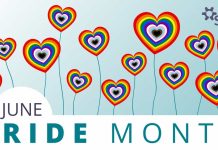Last April, our prestige beauty brand REN took out a full-page ad in the New York Times, suggesting that consumers buy from four of their biggest competitors: Biossance, Caudalie, Herbivore and YOUTH TO THE PEOPLE.
Advertising your closest rivals might not appear to make much business sense unless, like Arnaud Meysselle, CEO of REN, youre looking to shake things up.
Since forever in the prestige beauty market, packaging has meant luxury and what we are saying is packaging means waste, he explains. We needed to create a shock to get the message across.
They succeeded. Collaborating with the brands closest competitors in a joint mission to transition to planet-friendly packaging* by 2025 was certainly a bold move. But funding a marketing campaign encouraging consumers to buy from the competition was unprecedented.
However, for Arnaud, #WeAreAllies represents much more than a marketing strategy. It represents a new business status quo, offering unique opportunities to share and fast-track solutions that could radically reduce the amount of packaging waste created by the industry almost 70% of which currently ends up in landfill in the US (US EPA DATA 2017).
How collaboration is fast-tracking change
Of course, we are holding each other accountable to achieve our declared 2025 target, but what is really exciting is how we are sharing experiences, innovations and mistakes, he says. Within the alliance we are making sure that brands can fast-track their sustainability journey so that those who started later can learn from the mistakes we made and effectively take a short cut.
REN, for example, has offered its allies open access to the suppliers of its revolutionary aluminium sample tubes that provide a more sustainable solution to luxury beauty plastic sample sachets.
The aluminium sample tube is the result of many years of trial and error, explains Arnaud. Our first attempt was a recycled plastic (PCR) mini-tube. It was better than virgin plastic, but it was not the silver bullet we hoped it would be, as we discovered that it was too small to recycle. Now we think we have the silver bullet with the aluminium tubes, and our allies can benefit from that.
It is a reciprocal process. We are learning a lot as well. Biossance, for example, is part of a biotech company that is creating botanicals that can be made in the lab rather than harvested, while Caudalie is very strong in offsetting carbon emissions. We could have found these contacts and solutions ourselves, but by working together in this way we can make more progress faster.
How transparency, not perfection, is the key to growth
And it is progress and transparency, not perfection, that Arnaud feels will drive real change. I am always amazed when I speak to people whose brands are pretty advanced in finding sustainable solutions, but who are not talking about it, he says. People dont expect perfection, but they will question the brands that are quiet about sustainability.
When we relaunched our Atlantic Kelp shower gel in an ocean plastic bottle, for example, a lot of people in the business were really concerned that its greyish colour would be off-putting for consumers, he remembers. So we decided to celebrate its flaws and promote it under the banner: Grey is the new Green. Just by explaining what we were doing, and why, we multiplied product sales by ten.
Arnaud feels transparency is equally important when dealing with larger sustainability issues: People can feel a little overwhelmed at the size of the problem and feel they cannot do anything at their level, so part of our job is to show them that there are lots of things they can do.
Purpose, packaging and growth
Although sustainable packaging has always been part of the REN ethos its founders were one of the first to use FSC (Forest Stewardship Council) certified paper and non-toxic ink on their labels it was only in 2017 that it officially became the brands true purpose after Arnaud saw the extent of the packaging waste problem first hand.
I was on a clean-up walk in Santa Monica, California and was shocked by the huge amounts of waste on a beach that was supposed to be one of the super clean, he says.
This encounter was a turning point for Arnaud and the brand. We decided to launch the Zero Waste pledge as a result, and in doing so we also found our purpose: to be clean to skin and to the planet.
This purpose-led approach has catalysed growth at all levels. The minute we move to new sustainable packaging, we see sales go up from between 50% and 350% per SKU. So it is working on a business level, says Arnaud. But we are also seeing more retention of staff, and we are attracting more talent.
Building momentum for a planet-friendly future
It is also attracting new recruits for the Allies. Although many brands are approaching REN about joining the alliance, there are criteria they need to fulfil to prove their commitment to converting to planet-friendly packaging by 2025.
We are prioritising brands who are already engaged in the road map, explains Arnaud. As for RENs own sustainability voyage, refillables and reusables are definitely on the horizon, although Arnauds ultimate ambition is to see sustainable packaging become the industry norm.
When REN was founded, sustainable packaging was limited by the technology available, he says, explaining that it is thanks to the innovations made in the last 20 years, such as recycled plastic, that a zero waste packaging has become an achievable target.
Today, there is no excuse for businesses not to be sustainable, he says, acknowledging that not all businesses have it in their DNA to make sustainability a priority, but that it is his priority to help those who do want to make planet-friendly changes.
I was not born an activist. I do not come from an activist family. But I have become an activist since joining REN because I was lucky and met people who showed me the way who inspired me, he says. Now I think it is my role, with my team, to inspire others.
—–
* Packaging that is recyclable-ready, contains recyclable materials or is reusable.
Source: Almost 70% plastic containers and packaging waste ended up in landfill (EPA US 2017 data).
—–





